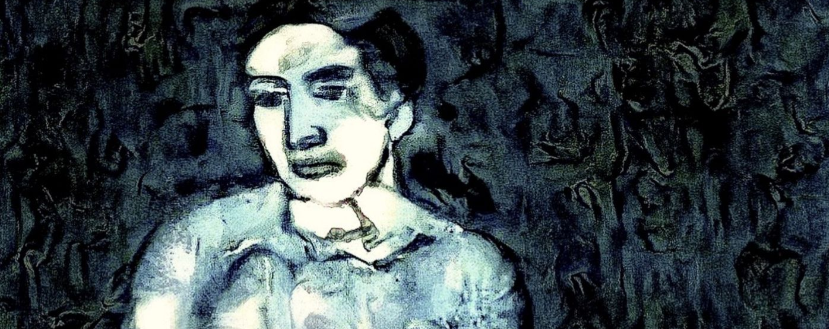Raiders of the lost art: Using AI to uncover the past

Image Credit: Anthony Bourached and George Cann
Many are still yet to be convinced that artificial intelligence can be truly creative. Now, a new neural network is able to reconstruct lost artworks, making a case for AI art and redefining art history
Between 1901 and 1904, Spanish artist Pablo Picasso painted numerous works depicting sombre, miserable figures represented in gloomy, monochromatic tones. This later went on to be defined as his “blue period,” a time in his life when he was burdened with depression, reeling from bereavements and misfortune.
Picasso is widely considered as one of the most important artists of the 20th century, as such art historians have studied his paintings in great depth. Now, thanks to an ingenious neural network, they are able to delve even deeper into Picasso’s work, by digitally scraping off the layers of oil paint to uncover and recreate previously unseen works veiled beneath the surface.
AI-art’s new beginnings
In 2015, Leon Gatys lead a team at the University of Tubingen in Germany in developing a new type of neural network, which they named NST (neural style transfer).
Neural networks are made in layers, each of which can analyse certain areas of an image. For instance, the edges of brush strokes, circular patterns or other shapes. Familiar objects in paintings, such as eyes or mouths, are easily picked out by the machine and labelled as such.

Gatys and his colleagues were able to develop upon that even further, building a dataset of defining characteristics. Their NST could use this dataset to tell the difference between artists by superimposing a style atop an image in order to look for a match. Now, researchers are using this method to reconstruct a lost Picasso.
The Old Guitarist is perhaps one of Picasso’s most famous artworks. The subject, an elderly man, is hunched over a classical guitar, blind to his own misery and hardship. However, an x-radiograph revealed the ghostly image of a woman lurking beneath the surface of the painting.
Two researchers, Anthony Bourached and George H. Cann, passed this image through an NST, transferring Picasso’s signature blue period style and reconstructing the image as it would have been if it had been finished.
How does NST work?
In their research paper, titled “Raiders of the Lost Art”, Bourached and Cann explain their process.
“We edited the x-radiographed artworks to remove the impression of the primary exterior artworks. This process involved manually removing features that were deemed unlikely to be present in the interior secondary pieces,” they explain.
The two then set about applying the content image (The Old Guitarist) and a style image (La Vie), to the neural style transfer, thus reconstructing The Lost Woman (La femme perdue) in the style of the period in which it was first drafted.

Bourached and Cann explain that deep convolutional neural networks enable the representation of abstract visual concepts because they combine both the power of deep learning with other properties. By generating or reconstructing these images, they believe they have displayed that human-like abstract concepts are present in neural networks.
Can neural networks be truly creative?
In the paper, the two computer scientists state that they have created “a human-AI collaboration which cultivates empathy with the creative potential of AI and its harmonious use as an artistic tool.”
Some still approach machine learning with trepidation, believing it to be a replacement for people, effectively leaving us no place in society. Research into GAN (generative adversarial networks) and other machine learning tools have been found to create totally unique, sometimes surreal, novel artworks. One such artwork sold at auction for half a million dollars in 2018, becoming the first artificial intelligence-generated artwork to do so. But many still believe that it will never be truly creative.
The re-creators of Picasso’s lost painting, on the other hand, are filled with optimism. They believe that machine learning will play a pivotal role in the future of art and creativity.
“The use of machine learning as an artistic tool can ultimately broaden creative insight and widen the landscape of inspirational ingenuity by human-AI collaboration …We believe that AI art may pioneer this positive change of mentality.”